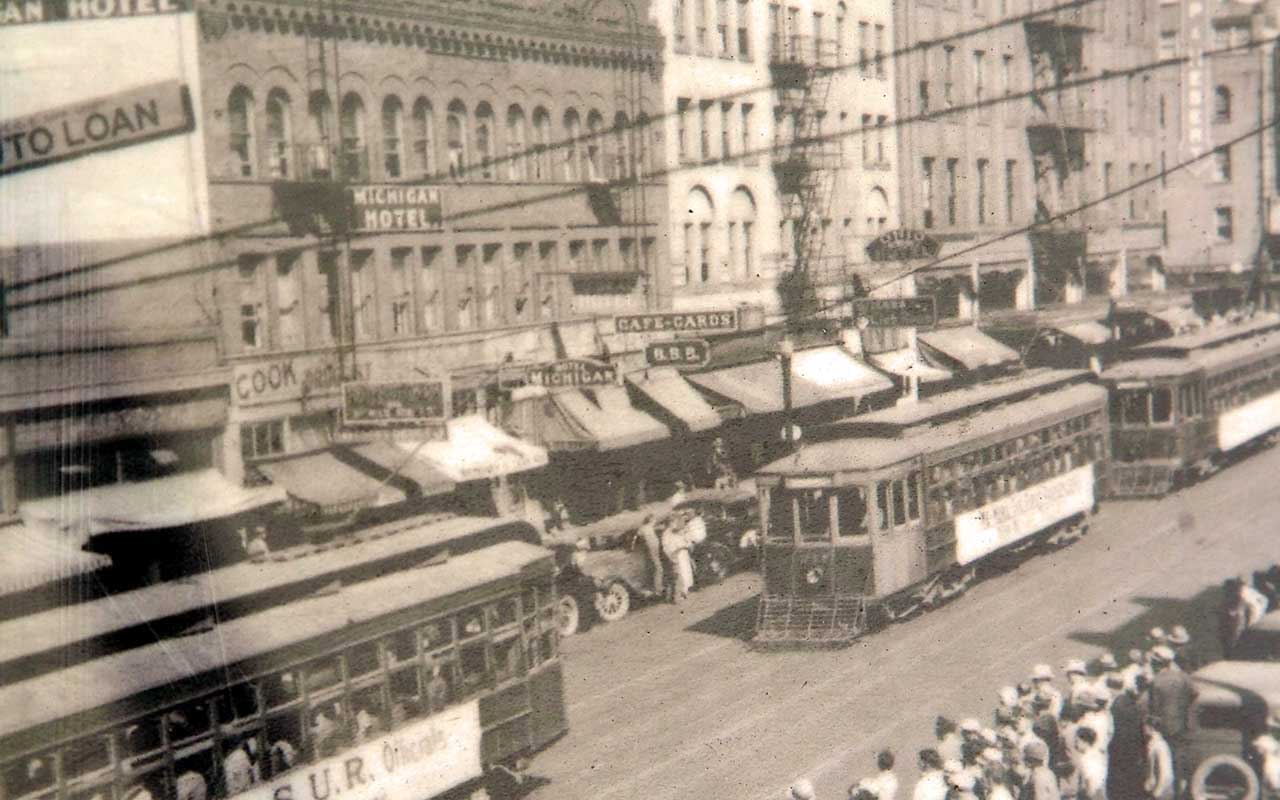
Days of Streetcar Yore: The evolution of Spokane's urban form
Nathan Rusch, Planning & Development Services, No Phone Number Available
Wednesday, October 8, 2014 at 1:42 a.m.

Stand atop Cliff Drive and look out over Downtown, the falls and across the Division corridor and you'll see the beautiful, unique Spokane cityscape. But cityscapes don't just happen. Whether a city's urban form is intricately planned or grows organically, the evolution of the city skyline can be traced through a history of decisions made by politicians and businessmen that has shaped our neighborhoods.
There's an old planning maxim, “Development follows pipe and pavement.” Architects and urban designers have less influence in how the city takes shape than the transportation folks burying utilities and laying down asphalt. Pull apart the network of streets and transportation systems and you would see telling signs of how the city has grown.
James N. Glover's 1873 purchase of a sawmill along the Spokane River was the beginning of today's Spokane cityscape. When the Northern Pacific Railroad's transcontinental line, laid through Spokane in 1881, crossed Corbin's international line up to Canada, Spokane became a crossroad and the settlement took off. The sudden flood of new Spokanites created a necessity to move people, and that necessity gave birth to streetcar transit.
The founding fathers of Spokane's public transit system were not city officials, but private developers. The conception of public transportation began in real-estate. The cast of actors in the creation of transit included J.J. Browne, a practicing lawyer; Francis H. Cook, a newspaper publisher of the Spokane Times; and Andrew Jackson Ross, a New York railroad contractor. All these players were heavily involved in the real estate industry in Spokane when they saw a dilemma in trying to sell their properties.
In order to sell homes in residential projects outside of walking distance from Downtown, these men devised public transit. In those days, most jobs were located in the downtown area and the era of the automobile hadn't yet flourished, so if these entrepreneurs were going to sell houses, their future dwellers needed a convenient way to travel into the city.
It was 1888 when the first streetcars began their service to the downtown. The Spokane Street Railway Company had just been incorporated by J.J. Browne, Henry C. Marshall and Andrew J. Ross and began laying rails in the dirt streets and running horse cars from Downtown to Browne's housing development, the Browne's Addition.
Horses would be replaced by steam, then electricity and several competitors emerged to run trolley lines out to their developments. Fares cost a single nickel and transfers along the same line were free. Once Washington Water Power Co. tried its hand at the power-consuming streetcar business, lines were running from Coeur D'Alene out to Medical Lake and Cheney.
At the turn of the century, riding the streetcar was as much a pastime as a commute. Trolley parks were placed at the end of the lines as a rider destination. H. Bolster & Co. would give Spokanites the place to go: Natatorium Park. Before there was an Expo in '74, there was “the Nat.” For the better part of a century, this West Central neighborhood amusement park, baseball diamond, pool, zoo and band stand would attract thousands of visitors and some big name performers, including Benny Goodman and Glen Miller. Out of ‘the Nat’ would come one of Riverfront Park's defining features, the Looff Carrousel.
The story of the streetcar echoes in Browne's Addition, in Riverfront Park, on the Washington Water Power station on the edge of the falls and in the whole of the expansion of the neighborhoods from Downtown up the South Hill and out into the plains.
Each neighborhood has its own history of decisions that dictate its form. History buffs, the contemplative and the observant, take a closer look at your neighborhoods and share with us what you see in it. Go to the Shaping Spokane website and click on the My Neighborhood Story tab on the bottom of the page. Your comments could help shape planning in Spokane and its neighborhoods.

